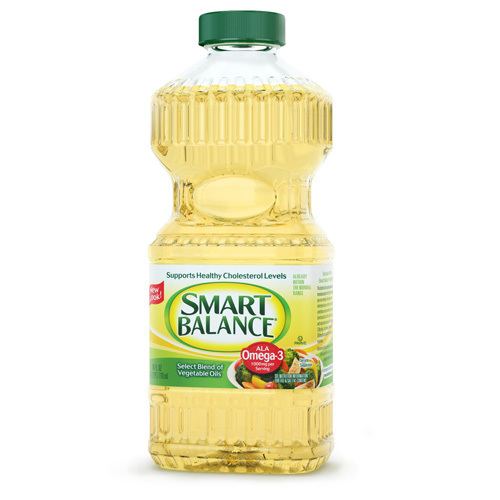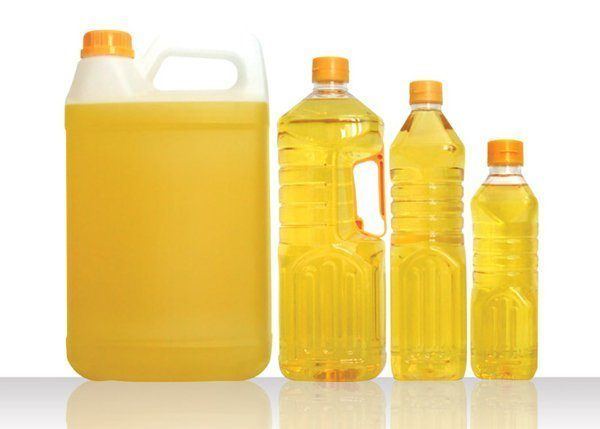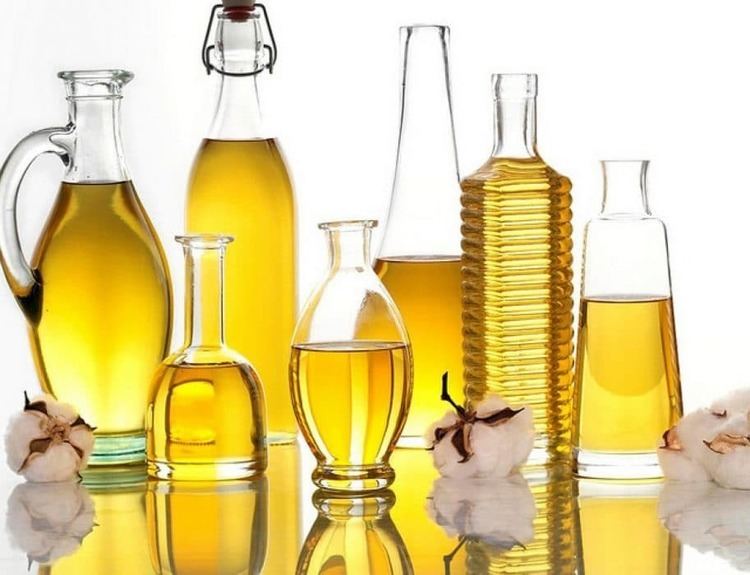 | ||
Similar Vegetable oil, Soy sauce, Table salt, Canola, Wheat flour | ||
Selecting the right cooking oil kitchen conundrums with thomas joseph
Cooking oil is plant, animal, or synthetic fat used in frying, baking, and other types of cooking. It is also used in food preparation and flavouring not involving heat, such as salad dressings and bread dips, and in this sense might be more accurately termed edible oil.
Contents
- Selecting the right cooking oil kitchen conundrums with thomas joseph
- How to select best cooking oil right diet by dr p janaki srinath
- Health and nutrition
- Trans fats
- Cooking with oil
- Storing and keeping oil
- Types of oils and their characteristics
- Cooking oil extraction and refinement
- Extraction
- Refinement
- Waste cooking oil
- Recycling
- Adulteration
- References

Cooking oil is typically a liquid at room temperature, although some oils that contain saturated fat, such as coconut oil, palm oil and palm kernel oil are solid.

There are a wide variety of cooking oils from plant sources such as olive oil, palm oil, soybean oil, canola oil (rapeseed oil), corn oil, peanut oil and other vegetable oils, as well as animal-based oils like butter and lard.

Oil can be flavoured with aromatic foodstuffs such as herbs, chillies or garlic.
How to select best cooking oil right diet by dr p janaki srinath
Health and nutrition

A guideline for the appropriate amount of fat—a component of daily food consumption—is established by regulatory agencies like the Food and Drug Administration. The recommendation is that 10% or fewer of daily calories should be from saturated fat, and 20-35% of total daily calories should come from polyunsaturated and monounsaturated fats.
While consumption of small amounts of saturated fats is common in diets, meta-analyses found a significant correlation between high consumption of saturated fats and blood LDL concentration, a risk factor for cardiovascular diseases. Other meta-analyses based on cohort studies and on controlled, randomized trials found a positive, or neutral, effect from consuming polyunsaturated fats instead of saturated fats (a 10% lower risk for 5% replacement).
Mayo Clinic has highlighted certain oils that are high in saturated fats, including coconut, palm oil and palm kernel oil. Those having lower amounts of saturated fats and higher levels of unsaturated (preferably monounsaturated) fats like olive oil, peanut oil, canola oil, soy and cottonseed oils are generally healthier. The US National Heart, Lung and Blood Institute urged saturated fats be replaced with polyunsaturated and monounsaturated fats, listing olive and canola oils as sources of healthier monounsaturated oils while soybean and sunflower oils as good sources of polyunsaturated fats. One study showed that consumption of non-hydrogenated unsaturated oils like soybean and sunflower are preferable to the consumption of palm oil for lowering the risk of heart disease.
Peanut oil, cashew oil and other nut-based oils may present a hazard to persons with a nut allergy.
Trans fats
Unlike other dietary fats, trans fats are not essential, and they do not promote good health. The consumption of trans fats increases one's risk of coronary heart disease by raising levels of "bad" LDL cholesterol and lowering levels of "good" HDL cholesterol. Trans fats from partially hydrogenated oils are more harmful than naturally occurring oils.
Several large studies indicate a link between the consumption of high amounts of trans fat and coronary heart disease, and possibly some other diseases. The United States Food and Drug Administration (FDA), the National Heart, Lung and Blood Institute and the American Heart Association (AHA) all have recommended limiting the intake of trans fats.
Cooking with oil
Heating an oil changes its characteristics. Oils that are healthy at room temperature can become unhealthy when heated above certain temperatures, so when choosing a cooking oil, it is important to match the oil's heat tolerance with the cooking method.
Palm oil contains more saturated fats than canola oil, corn oil, linseed oil, soybean oil, safflower oil, and sunflower oil. Therefore, palm oil can withstand the high heat of deep frying and is resistant to oxidation compared to highly unsaturated vegetable oils. Since about 1900, palm oil has been increasingly incorporated into food by the global commercial food industry because it remains stable in deep frying, or in baking at very high temperatures, and for its high levels of natural antioxidants.
The following oils are suitable for high-temperature frying above 230 °C or 446 °F because of their high smoke point:
Storing and keeping oil
All oils degrade in response to heat, light, and oxygen. To delay the onset of rancidity, a blanket of an inert gas, usually nitrogen, is applied to the vapor space in the storage container immediately after production – a process called tank blanketing.
In a cool, dry place, oils have greater stability, but may thicken, although they will soon return to liquid form if they are left at room temperature. To minimize the degrading effects of heat and light, oils should be removed from cold storage just long enough for use.
Refined oils high in monounsaturated fats, such as macadamia oil, keep up to a year, while those high in polyunsaturated fats, such as soybean oil, keep about six months. Rancidity tests have shown that the shelf life of walnut oil is about 3 months, a period considerably shorter than the best before date shown on labels.
By contrast, oils high in saturated fats, such as avocado oil, have relatively long shelf lives and can be safely stored at room temperature, as the low polyunsaturated fat content facilitates stability.
Types of oils and their characteristics
Lighter, more refined oils tend to have a higher smoke point. Experience using an oil is generally a sufficiently reliable guide. Although outcomes of empirical tests are sensitive to the qualities of particular samples (brand, composition, refinement, process), the data below should be helpful in comparing the properties of different oils.
Smoking oil indicates a risk of combustion, and left unchecked can also set off a fire alarm. When using any cooking oil, should it begin to smoke, reduce the heat immediately. The cook should be fully prepared to extinguish a burning oil fire before beginning to heat the oil, by having on hand the lid to place on the pan, or (for the worst case) having on hand the proper fire extinguisher.
Cooking oil extraction and refinement
Cooking oil extraction and refinement are separate processes. Extraction first removes the oil, typically from a seed, nut or fruit. Refinement then alters the appearance, texture, taste, smell, or stability of the oil to meet buyer expectations.
Extraction
There are three broad types of oil extraction:
In large-scale industrial oil extraction you will often see some combination of pressing, chemical extraction and/or centrifuging in order to extract the maximum amount of oil possible.
Refinement
Cooking oil can either be unrefined, or refined using one or more of the following refinement processes (in any combination):
Filtering, a non-chemical process which screens out larger particles, could be considered a step in refinement, although it doesn't alter the state of the oil.
Most large-scale commercial cooking oil refinement will involve all of these steps in order to achieve a product that's uniform in taste, smell and appearance, and has a longer shelf life. Cooking oil intended for the health food market will often be unrefined, which can result in a less stable product but minimizes exposure to high temperatures and chemical processing.
Waste cooking oil
Proper disposal of used cooking oil is an important waste-management concern. Oil is lighter than water and tends to spread into thin and broad membranes which hinder the oxygenation of water. Because of this, a single litre of oil can contaminate as much as 1 million litres of water. Also, oil can congeal on pipes provoking blockages.
Because of this, cooking oil should never be dumped in the kitchen sink or in the toilet bowl. The proper way to dispose of oil is to put it in a sealed non-recyclable container and discard it with regular garbage. Placing the container of oil in the refrigerator to harden also makes disposal easier and less messy.
Recycling
Cooking oil can be recycled. It can be used as animal feed, directly as fuel, and to produce biodiesel, soap, and other industrial products.
In the recycling industry, used cooking oil recovered from restaurants and food-processing industries (typically from deep fryers or griddles) is called recycled vegetable oil (RVO), used vegetable oil (UVO), waste vegetable oil (WVO), or yellow grease.
Yellow grease is used to feed livestock, and to make soap, make-up, clothes, rubber, detergents, and biodiesel fuel.
Used cooking oil, besides being converted to biodiesel, can be used directly in modified diesel engines and for heating.
Grease traps or interceptors collect fats and oils from kitchen sinks and floor drains which would othewise clog sewer lines and interfere with septic systems and sewage treatment. The collected product is called brown grease in the recycling industry. Brown grease is contaminated with rotted food solids and considered unsuitable for re-use in most applications.
Adulteration
Gutter oil and trench oil are terms used in China to describe recycled oil processed to resemble virgin oil, but containing toxic contaminants and sold illegally for cooking; its origin is frequently brown grease from garbage.
In Kenya, thieves sell transformer oil stolen from electric transformers to operators of roadside food stalls for use in deep frying, suitable for prolonged use longer than regular cooking oil, but a threat to consumer health due to the presence of PCBs.
